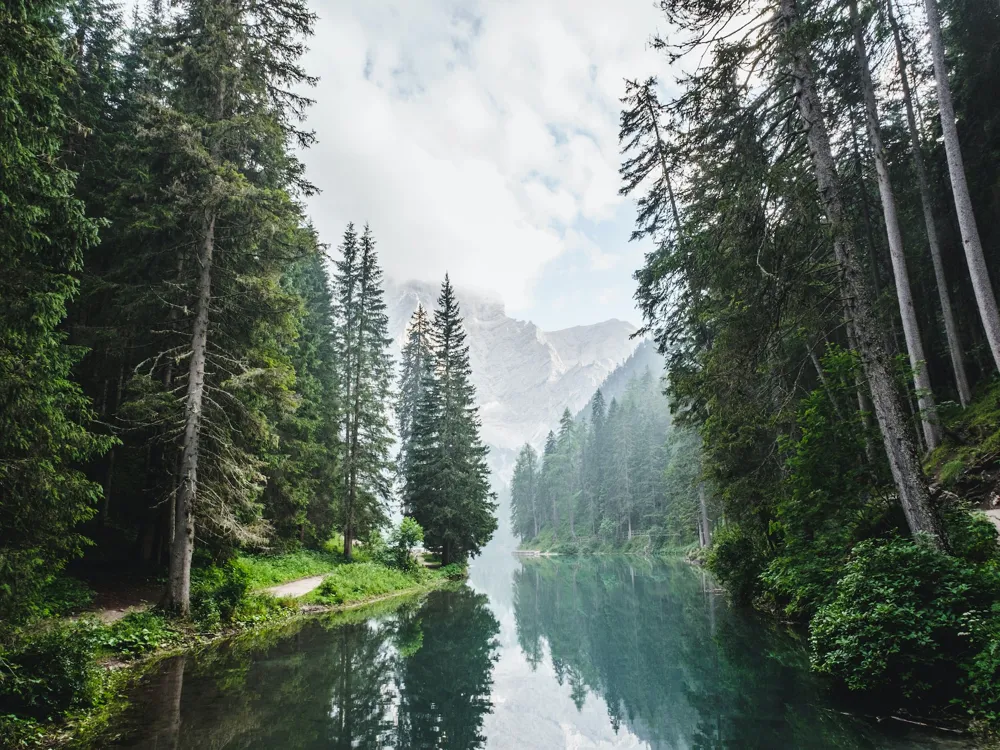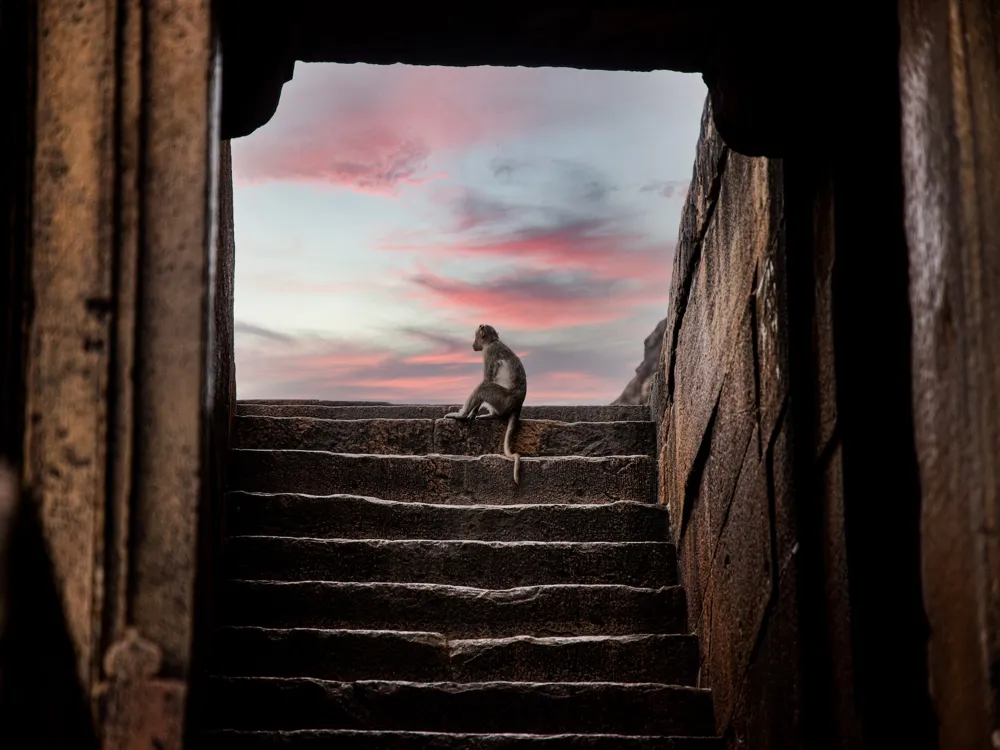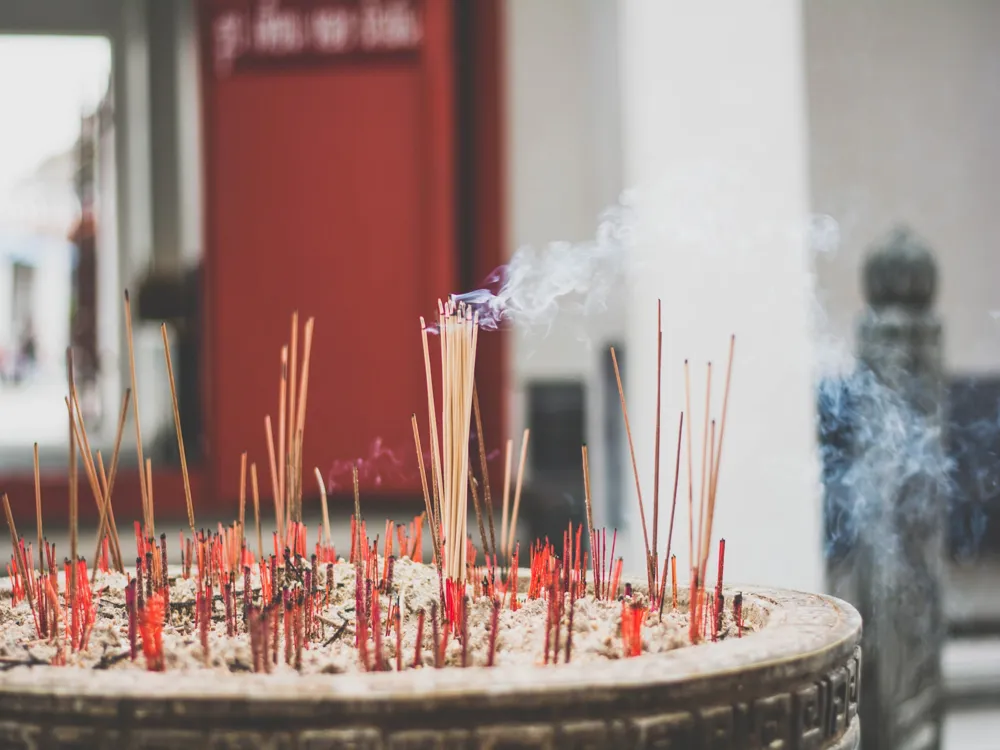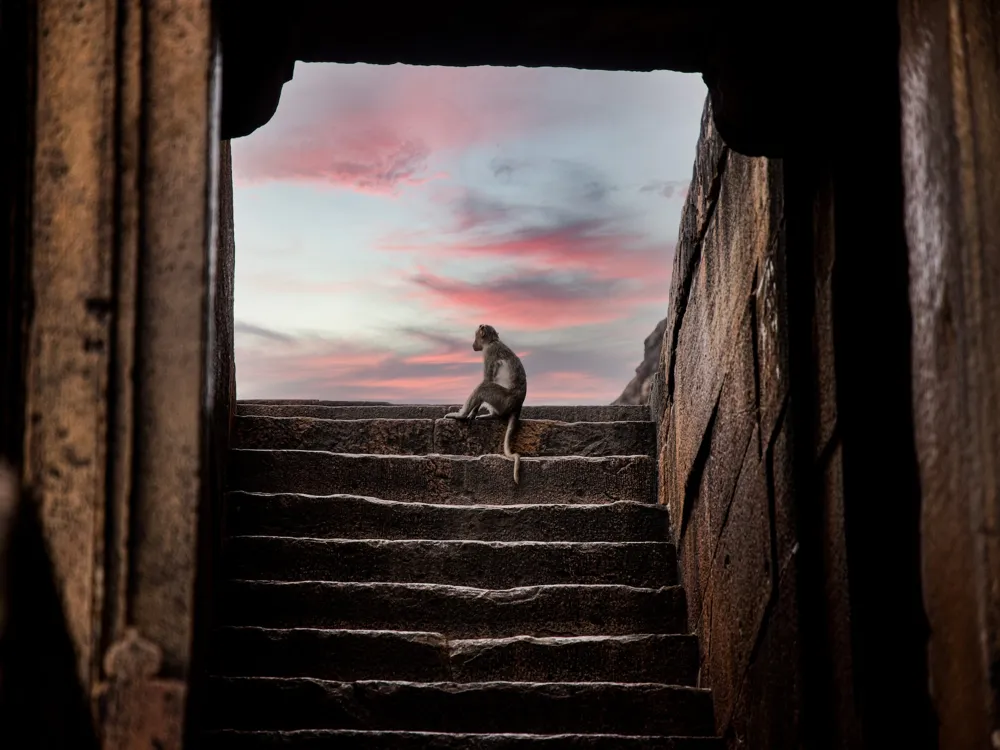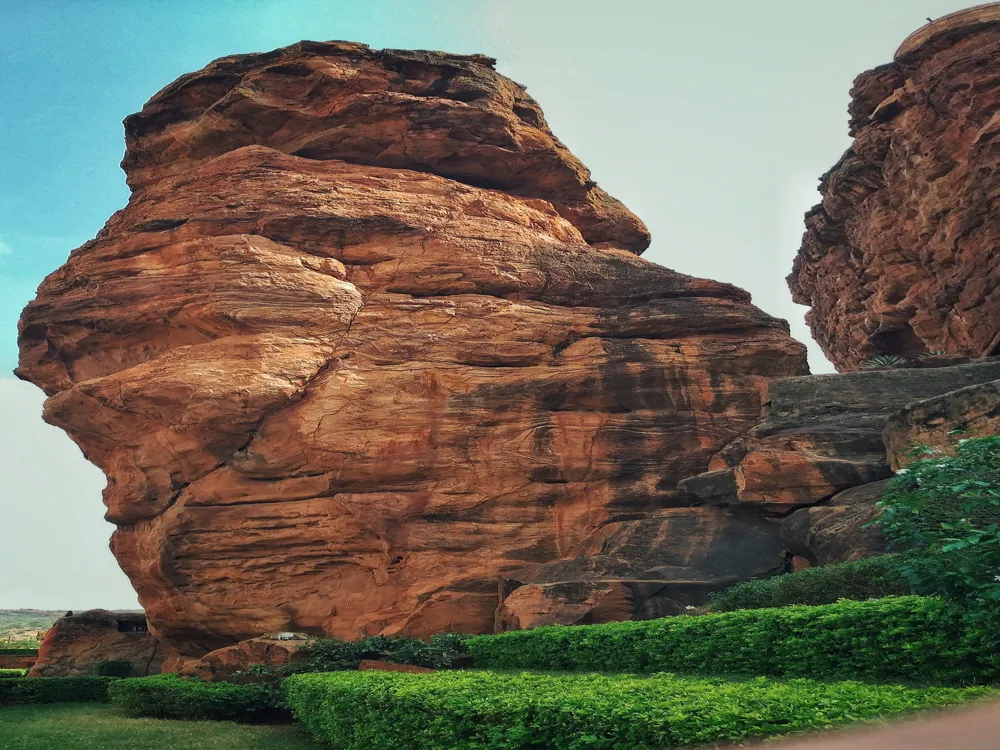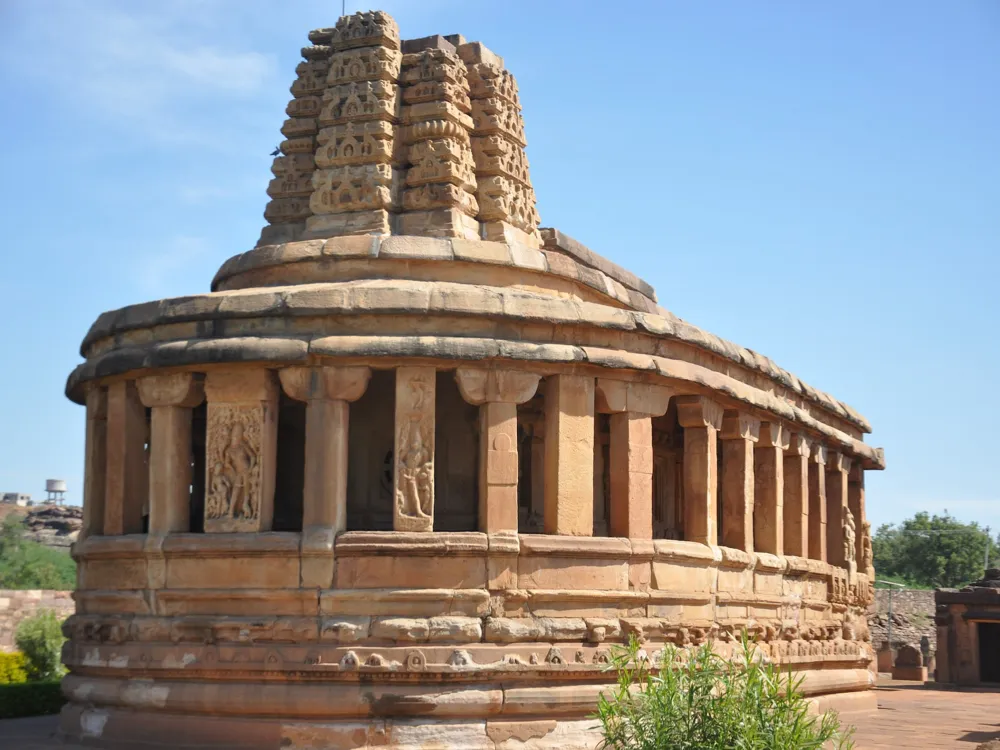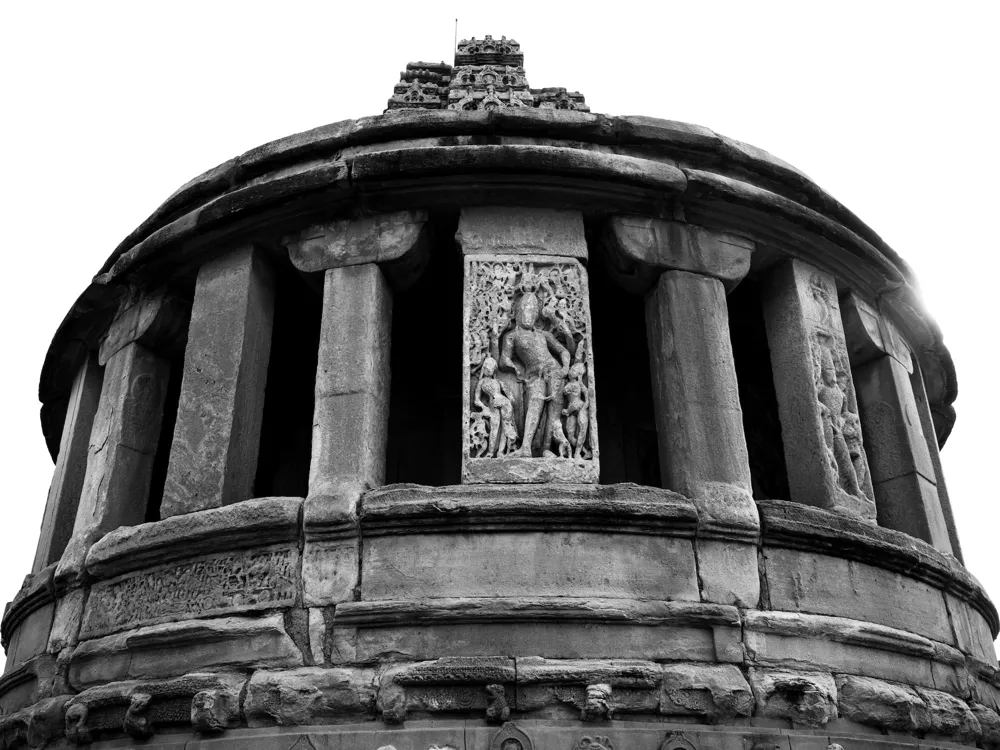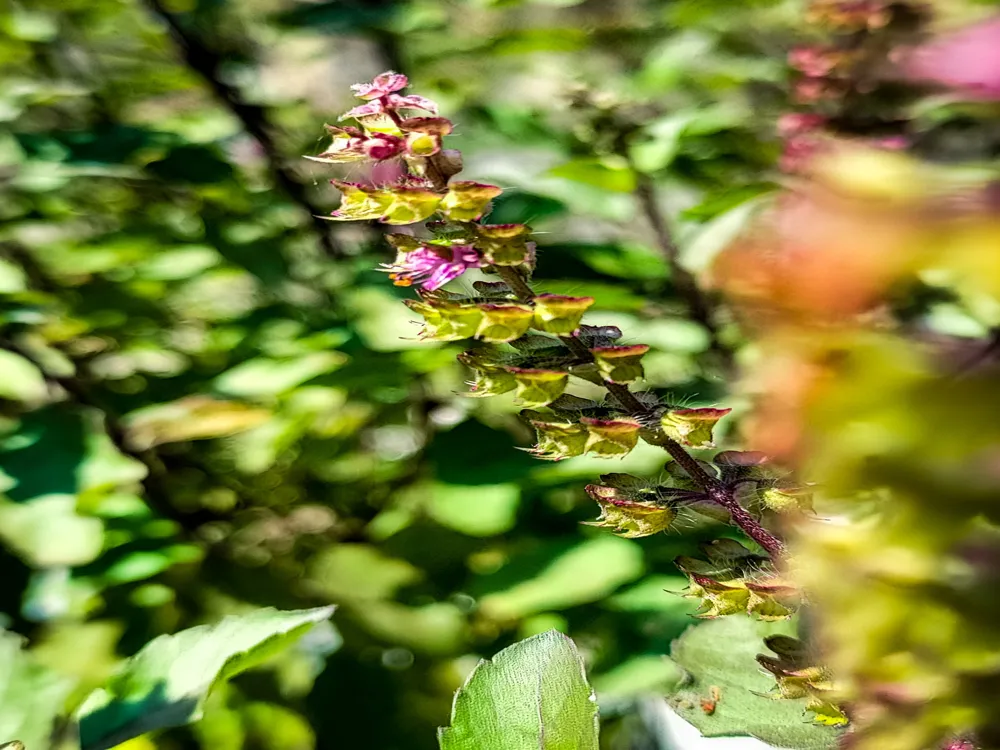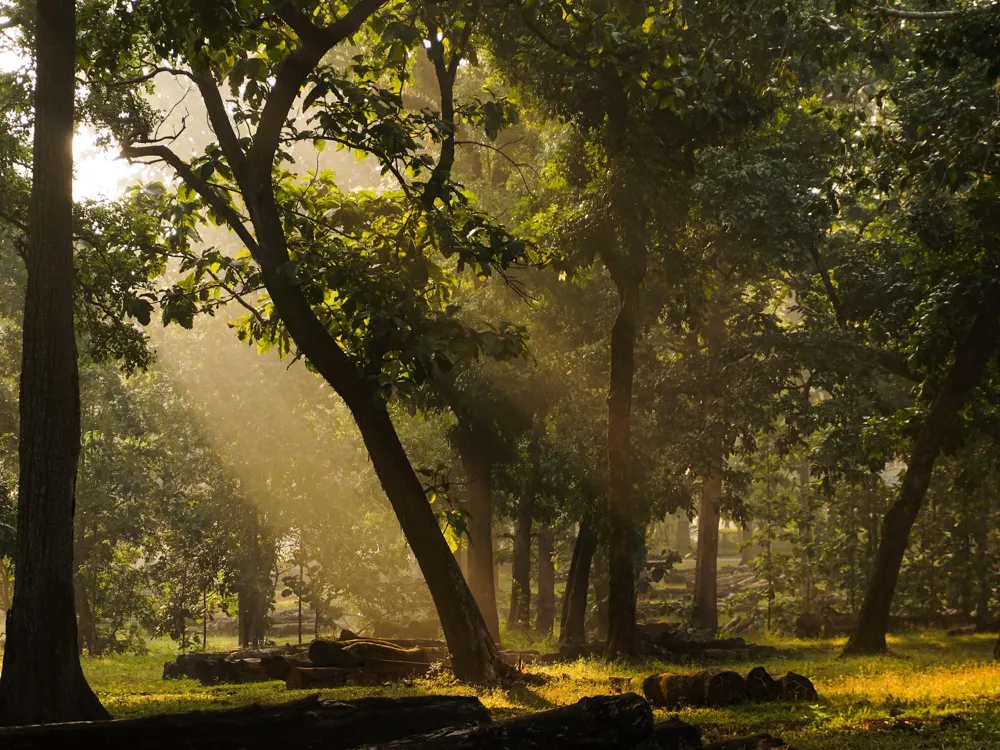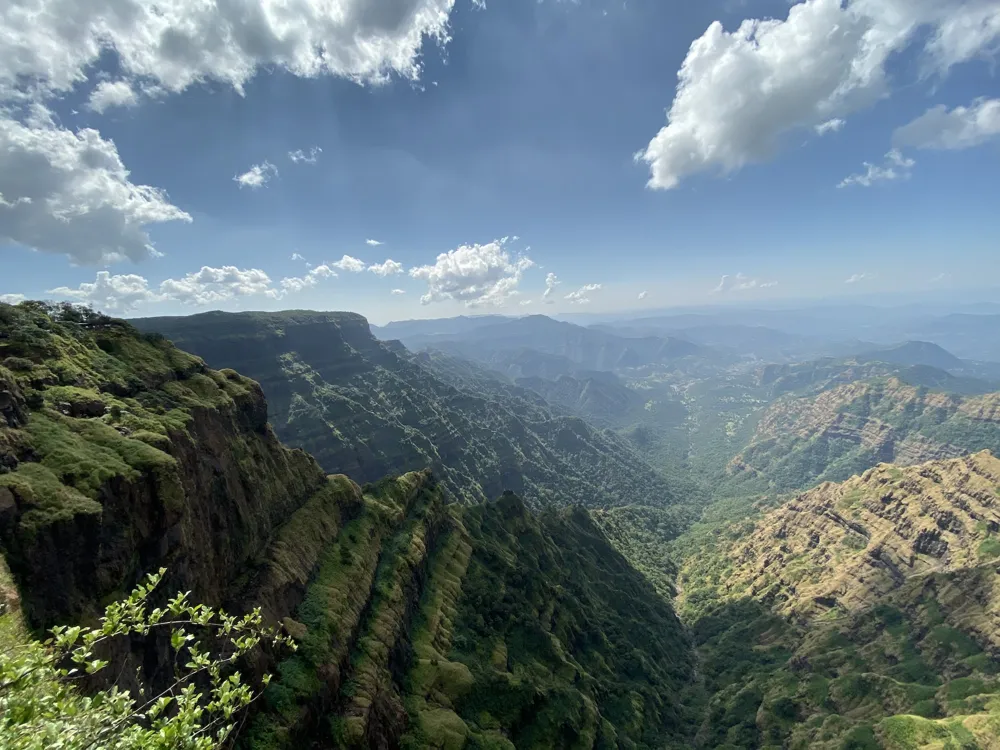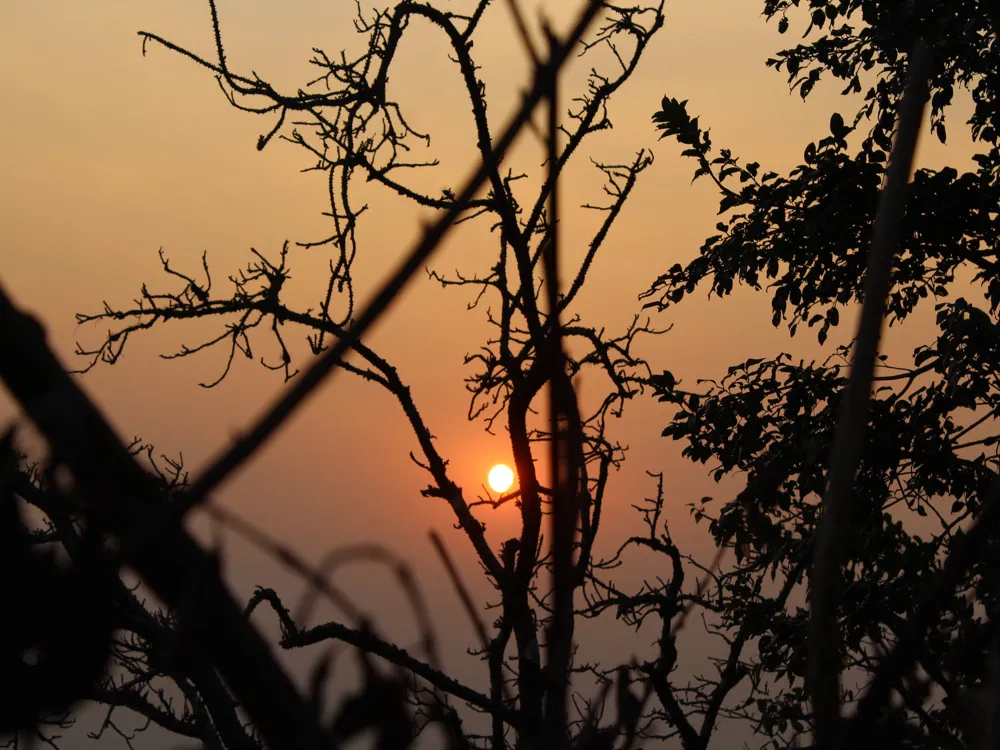The Bhuthanatha Temples, nestled in the serene town of Badami in Karnataka, India, stand as a testament to the rich historical and architectural legacy of the region. These temples, dating back to the 7th and 8th centuries, were constructed during the reign of the Chalukya dynasty, known for their distinctive architectural style that blends North Indian Nagara and South Indian Dravidian styles. The Bhuthanatha Temples, dedicated to Lord Shiva, are set against the backdrop of the Agastya Tirtha Lake, enhancing their ethereal beauty and creating a mesmerizing harmony between nature and architecture. The main temple complex comprises two primary structures, the Bhuthanatha Temple and the Mallikarjuna Temple. These temples showcase the evolution of early Chalukyan architecture. The temples are adorned with intricate carvings, detailed friezes, and an array of sculptures that depict various deities, mythological scenes, and aspects of daily life during the Chalukyan era. The sandstone used in the construction of these temples has withstood the test of time, preserving the exquisite artistry of ancient Indian craftsmen. Beyond their architectural grandeur, the Bhuthanatha Temples hold significant religious importance. They serve as a hub for various cultural and religious festivities, drawing devotees and tourists alike. The serene ambiance of the temples, coupled with the historical richness, offers a unique spiritual and cultural experience to its visitors. The architecture of the Bhuthanatha Temples is a remarkable blend of various styles and influences, primarily showcasing the early and later phases of Chalukyan architecture. The temples exhibit a harmonious blend of Nagara and Dravidian architectural styles, a signature of the Chalukyan dynasty. The Bhuthanatha Temple, the older of the two, reflects the early phase with simpler and more austere designs, while the Mallikarjuna Temple represents the later phase with more ornate and elaborate features. The temples are characterized by their distinctive shikhara or vimana (tower), which is built in a tiered style that narrows as it ascends, crowned by a finial. The walls of the temple are profusely decorated with panels depicting Hindu deities, mythical animals, and scenes from epics like the Ramayana and Mahabharata. The intricate rock-cut features and the use of sandstone lend the temples a unique texture and color, setting them apart from other architectural marvels of the period. One of the striking features of the Bhuthanatha Temples is the open pillared mandapas (pavilions) that offer breathtaking views of the Agastya Tirtha Lake. The pillars are adorned with detailed carvings, showcasing the expertise of the Chalukyan sculptors. The interplay of light and shadow through these pillars adds to the mystical aura of the temple complex. The integration of natural elements into the architectural design, such as the alignment of the temple with the lake and surrounding rock formations, illustrates the advanced understanding of aesthetics and environment by the ancient architects. The ideal time to visit the Bhuthanatha Temples is from October to March when the weather is pleasant, making it conducive for exploration and sightseeing. Visitors are advised to dress modestly, respecting the sanctity of the temple. It's recommended to wear traditional or conservative clothing, covering shoulders and knees. Photography is allowed in most areas of the temple, but it is advisable to check for any restrictions and respect the privacy of other visitors and devotees. Engaging a local guide can enhance the experience as they provide insights into the history, architecture, and legends associated with the temples. Basic facilities like restrooms and small eateries are available near the temple complex. However, it's advisable to carry water and snacks. The Bhuthanatha Temples in Badami are well-connected by road and rail. The nearest major city is Hubli, which is approximately 100 kilometers away. Visitors can reach Badami by train, with the Badami railway station being the closest, or by bus from major cities like Bengaluru and Hubli. For more convenience and flexibility, hiring a taxi or self-driving is a preferred option. The drive to Badami is scenic, offering glimpses of the rural and cultural landscape of Karnataka. Read More:Overview of Bhuthanatha Temples of Badami, Karnataka
Architecture of Bhuthanatha Temples
Tips When Visiting Bhuthanatha Temples
Best Time to Visit
Dress Code and Etiquette
Photography Guidelines
Local Guides
Facilities and Amenities
How To Reach Bhuthanatha Temples
Bhuthanatha Temples
Badami
Karnataka
NaN onwards
View badami Packages
Weather :
Label : Must Visit
Tags : Temple
Constructed in : 7th century CE
Constructed By : Badami Chalukyas
Planning a Trip? Ask Your Question
Badami Travel Packages
View All Packages For Badami
Top Hotel Collections for Badami

Private Pool

Luxury Hotels

5-Star Hotels

Pet Friendly
Top Hotels Near Badami
Other Top Ranking Places In Badami
View All Places To Visit In badami
View badami Packages
Weather :
Label : Must Visit
Tags : Temple
Constructed in : 7th century CE
Constructed By : Badami Chalukyas
Planning a Trip? Ask Your Question
Badami Travel Packages
View All Packages For Badami
Top Hotel Collections for Badami

Private Pool

Luxury Hotels

5-Star Hotels

Pet Friendly







